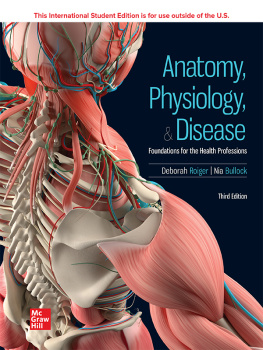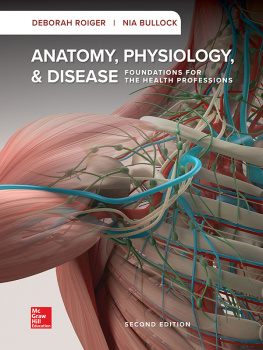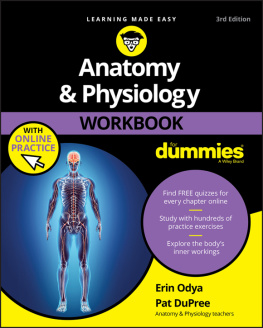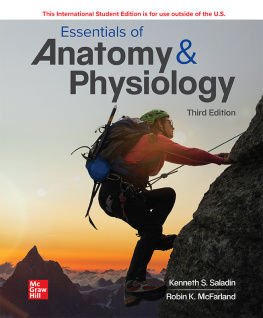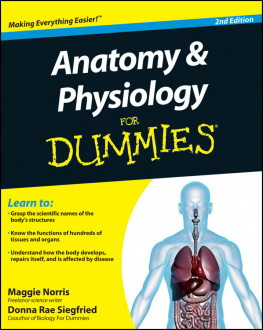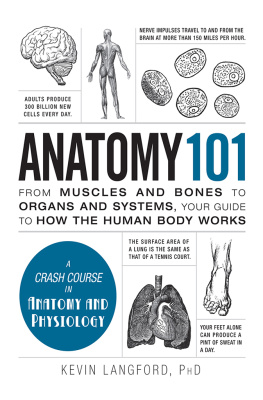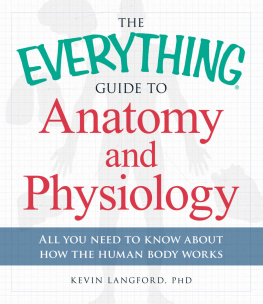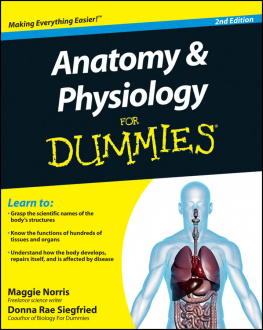Table of Contents
Page xvii
Acknowledgments
Thank you to the Product Development staff at McGraw HillMelisa Seegmiller and Matthew Garcia for their guidance on the revision; to Vicki Krug, who skillfully guided the many details of the production process; and to Valerie Kramer for her marketing expertise. We are grateful to Jason McAlexander, medical illustrator at MPS, for his talents and patience in both guiding and working on the gorgeously updated illustration program; and to David Hash for his assistance with the revision of the illustration program, interior design, and cover. Thanks to Marilynn Taylor for her expert copyediting skills and to Sharon O'Donnell and A. Nayyer Shamsi for their attention to detail in proofreading. Christina Gan, our digital author, worked tirelessly to ensure that the digital program that accompanies this text ties seamlessly to the learning outcomes and content in this text. Also, thank you to the reviewers whose critical eye and constructive suggestions contributed significantly to this revision. Finally, a special thanks to our families whose neverending support, patience, and encouragement make all things possible.
Deborah Roiger
Nia Bullock
Reviewers
Joy BoroSouth College, Knoxville, Tennessee
Melissa BraceMetropolitan Community College
Michelle CareyHutchinson Community College
Sharon S. EllertonCUNY, Queensborough Community College
Susanne J. KalupWestermoreland County Community College
Karan Oliver-TucciCollege of DuPage
Elisa RatliffClark State Community College
Barbara ReitzPensacola State College
Ernesto R. Rodriguez M.Fortis Institute
Amber M. SamaniegoEverett Community College
Aaron WoodyattSouth College
The authors managed to describe some of the most complicated physiologicalprocesses in a way that novice students can understand, without skimping on thedetails. Sections of the textbook are bookended with real life examples to immerse thestudent in the subject matter. Clinical and disease point boxes with real life examplesof various pathologies that occur in the organs or tissues discussed are embeddedthroughout each chapter. This helps students immediately apply the relevance of whatthey'd just learn to medical situations. Content like this increases the chance of astudent consolidating the information they just read into their long term memory andthus greatly aids their overall comprehension of the subject matter.
Elisa Ratliff,
Clark State Community College
Page A-1
Appendix A
The Metric System
The metric system is commonly used in science and medicine. This appendix will help you with conversions between the metric and U.S. systems.

FIGURE A.1 Ruler inch and metric.
Length
TABLE A.1 Units of Length
| Metric Unit | Metric Equivalent | Conversion to U.S. System |
|---|
| Kilometer (km) | 1,000 m | 0.62 mile; 1.6 km/mile |
| Meter (m) | 100 cm; 1,000 mm | 39.4 inches; 1.1 yards |
| Centimeter (cm) | 1/100 m; 0.01 m; 10 mm | 0.39 inch; 2.5 cm/inch |
| Millimeter (mm) | 1/1,000 m; 0.001 m | 0.039 inch |
| Micrometer (m) | 1/1,000 mm; 0.001 mm |
Examples of metric lengths:
Measure the length and the width of your thumb in inches and centimeters, using the ruler provided on this page. Also measure the maximum distance you can spread your thumb and index finger apart. Knowing these metric measurements will give you a reference when you read about metric lengths in the text.
Weight
TABLE A.2 Units of Weight
| Metric Unit | Metric Equivalent | Conversion to U.S. System |
|---|
| Kilogram (kg) | 1,000 g | 2.2 pounds (lb) |
| Gram (g) | 1,000 mg | 0.035 ounce (oz); 28.5 g/oz |
| Milligram (mg) | 1/1,000 g; 0.001 g |
| Microgram (g) | 1/1,000 mg; 0.001 mg |
Examples of metric weights:
U.S. penny: 2.50 g
U.S. nickel: 5.00 g
5-pound bag of sugar: 2.268 kg
Page A-2
Volume
TABLE A.3 Units of Volume
| Metric Unit | Metric Equivalent | Conversion to U.S. System |
|---|
| Liter (L) | 1,000 mL | 1.06 quarts; 0.264 gallon |
| Deciliter (dL) | 1/10 L; 0.1 L |
| Milliliter (mL) | 1/1,000 L; 0.001 L | 0.034 ounce (oz); 29.4 mL/oz |
| Microliter (L) | 1/1,000 mL; 0.001 mL |
Examples of metric volumes:
Large bottle of soda: 2 L
12 oz can of soda: 355 mL
Page A-3
Appendix B
Nutrition Table
The following tables show the nutritional goals for age-gender groups based on dietary intakes and dietary guidelines recommendations. contains the information for ages 2 years and older.
Nutritional Goals for Age-Sex Groups
TABLE B.1 Daily Nutritional Goals, Ages 6 through 11 Months and 12 through 23 Months
| Nutrient | 6 through 11 Months | 12 through 23 Months |
|---|
| Goal | Source of Goal | Goal | Source of Goalb |
|---|
| Macronutrients |
| Protein (g) | 11 | RDA | 13 | RDA |
| Carbohydrate (g) | 95 | AI | 130 | RDA |
| Fiber, total dietary (g) | n/a | n/ad | 19 | AI |
| Total lipid (% kcal) | n/ad | n/ad | 30-40 | AMDR |
| 18:2 Linoleic acid (g) | 4.6 | AI | 7 | AI |
| 18:3 Linolenic acid (g) | 0.5 | AI | 0.7 | AI |
| Minerals |
| Calcium (mg) | 260 | AI | 700 | RDA |
| Iron (mg) | 11 | RDA | 7 | RDA |
| Magnesium (mg) | 75 | AI | 80 | RDA |
| Phosphorus (mg) | 275 | AI | 460 | RDA |
| Potassium (mg) | 860 | AI | 2,000 | AI |
| Sodium (mg) | 370 | AI | 1,200 | CDRR |
| Zinc (mg) | 3 | RDA | 3 | RDA |
| Vitamins |
| Vitamin A (mcg RAE) | 500 | AI | 300 | RDA |
| Vitamin E (mg ATc) | 5 | AI | 6 | RDA |
| Vitamin D (IUc) | 400 | AI | 600 | |

